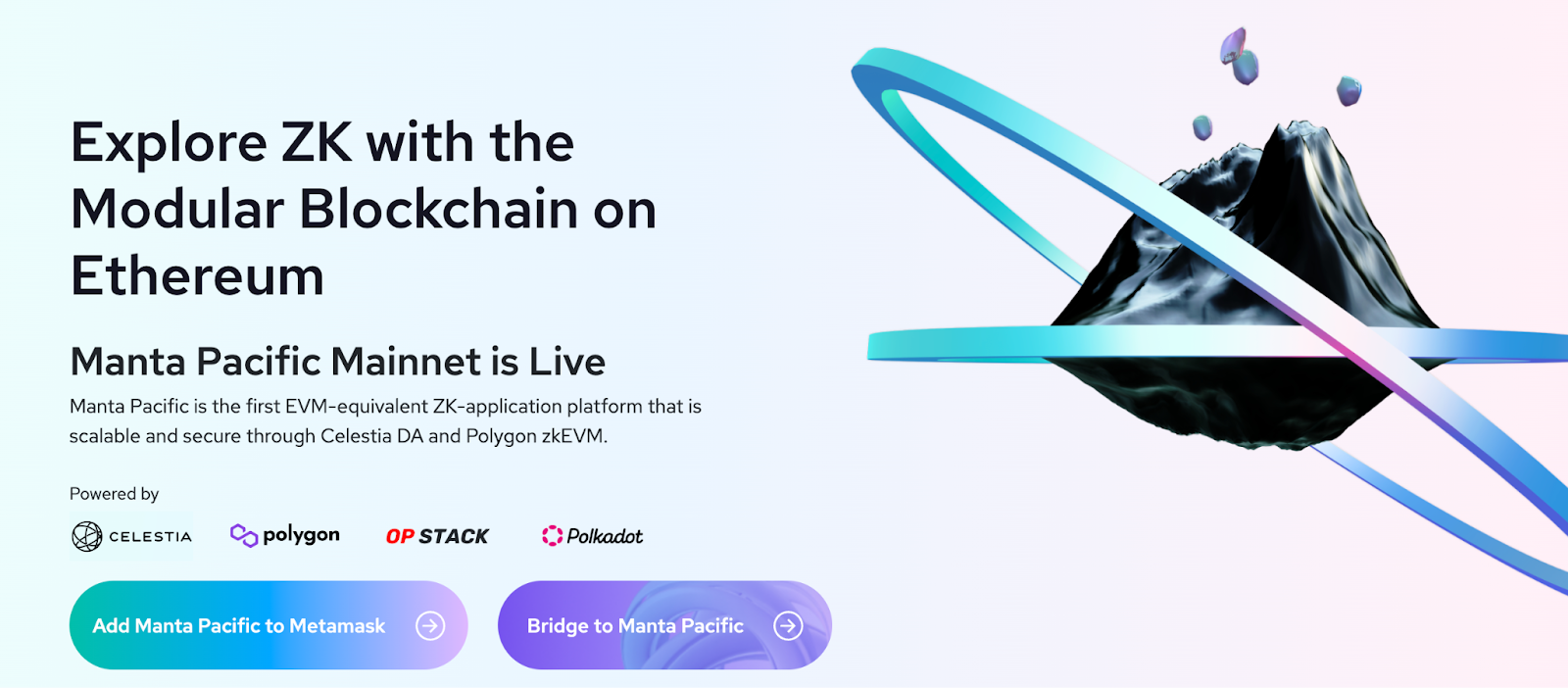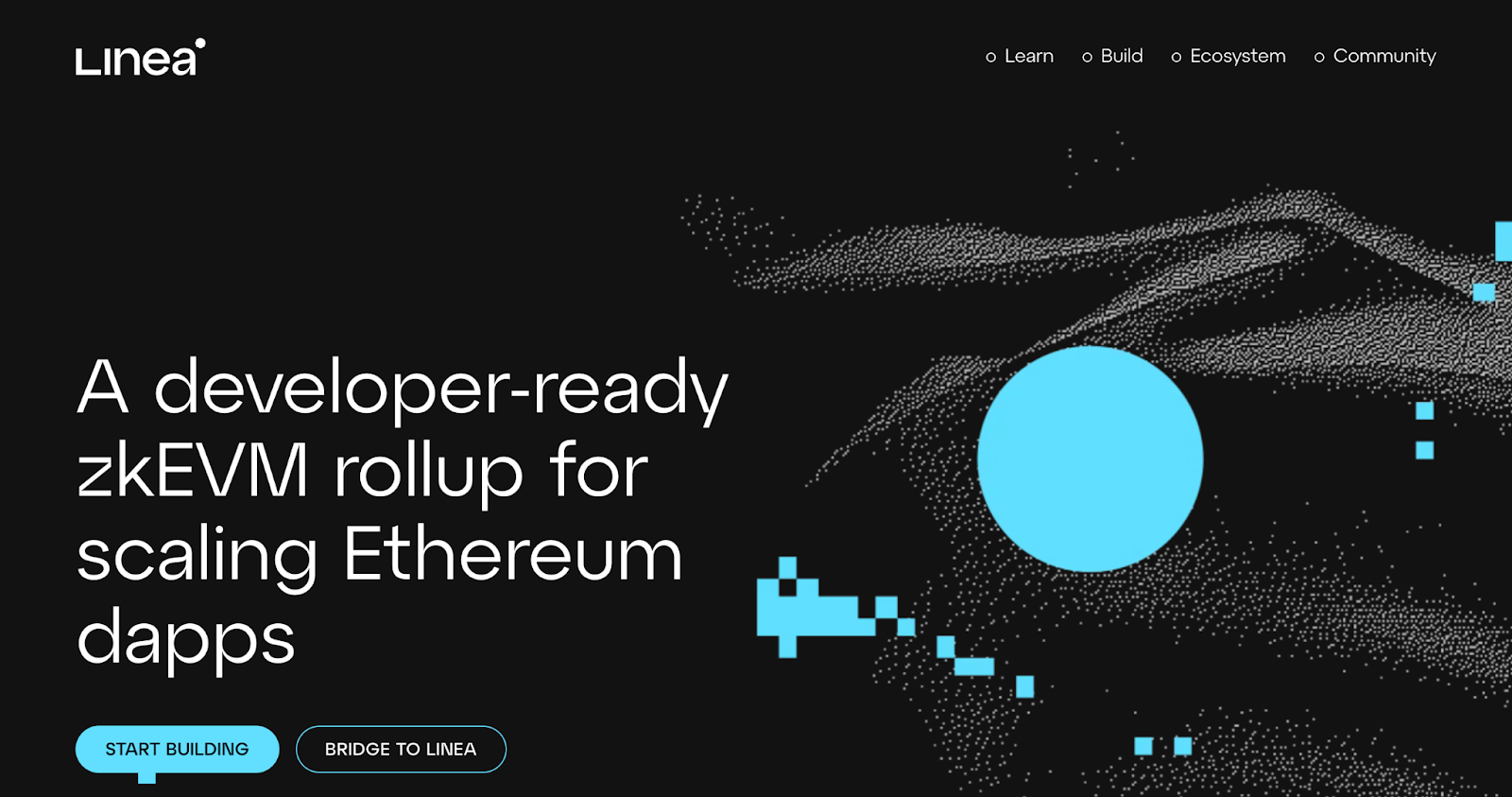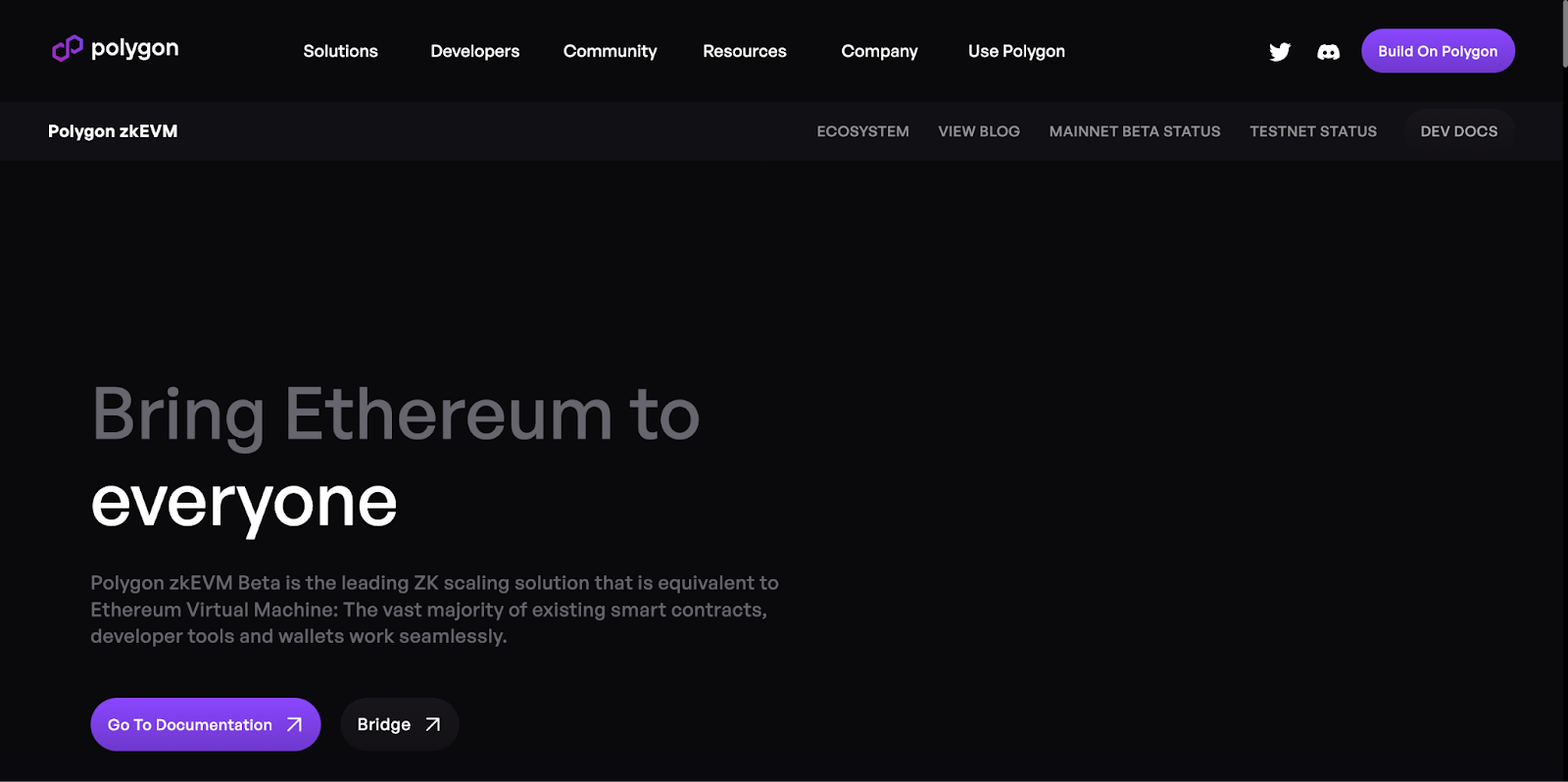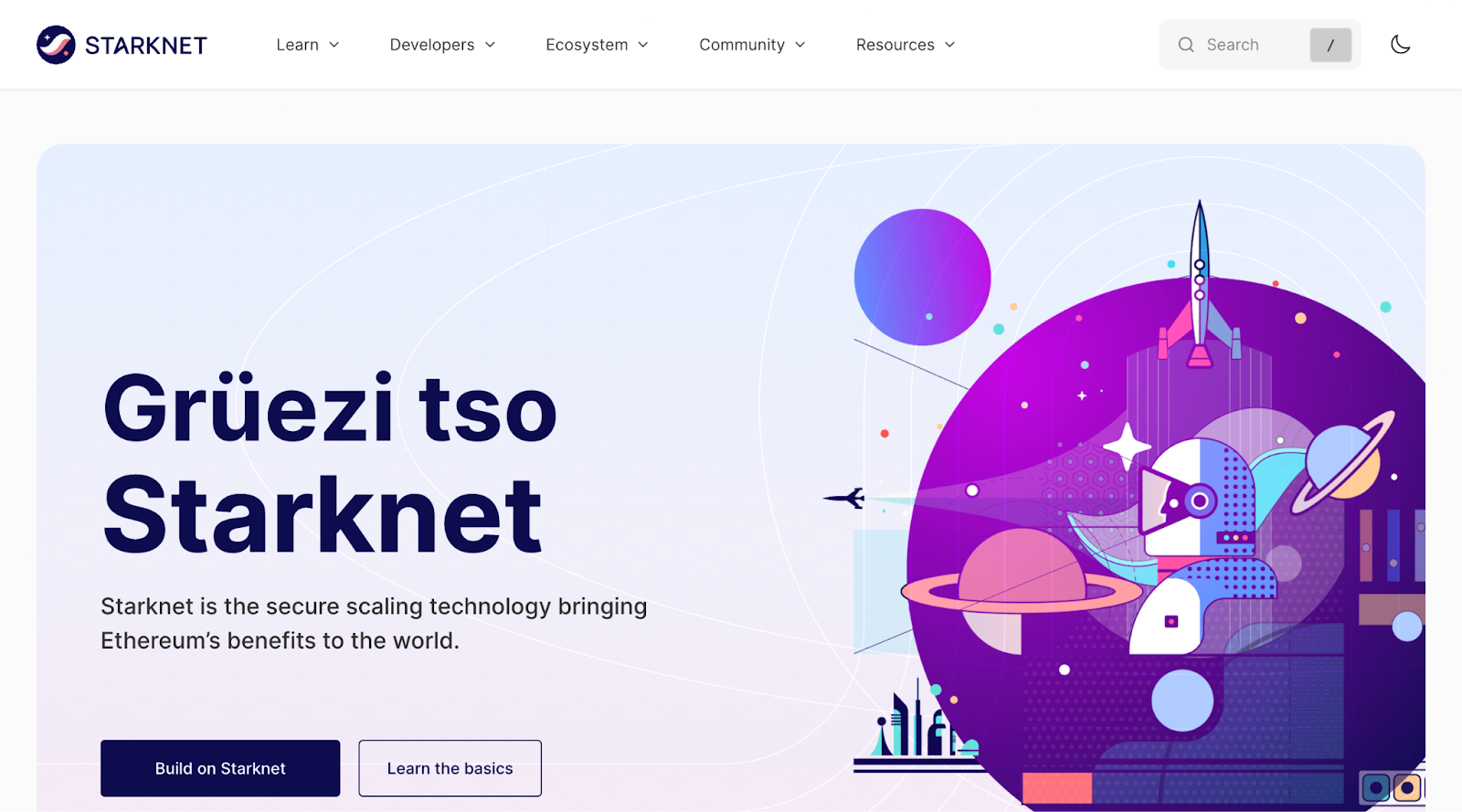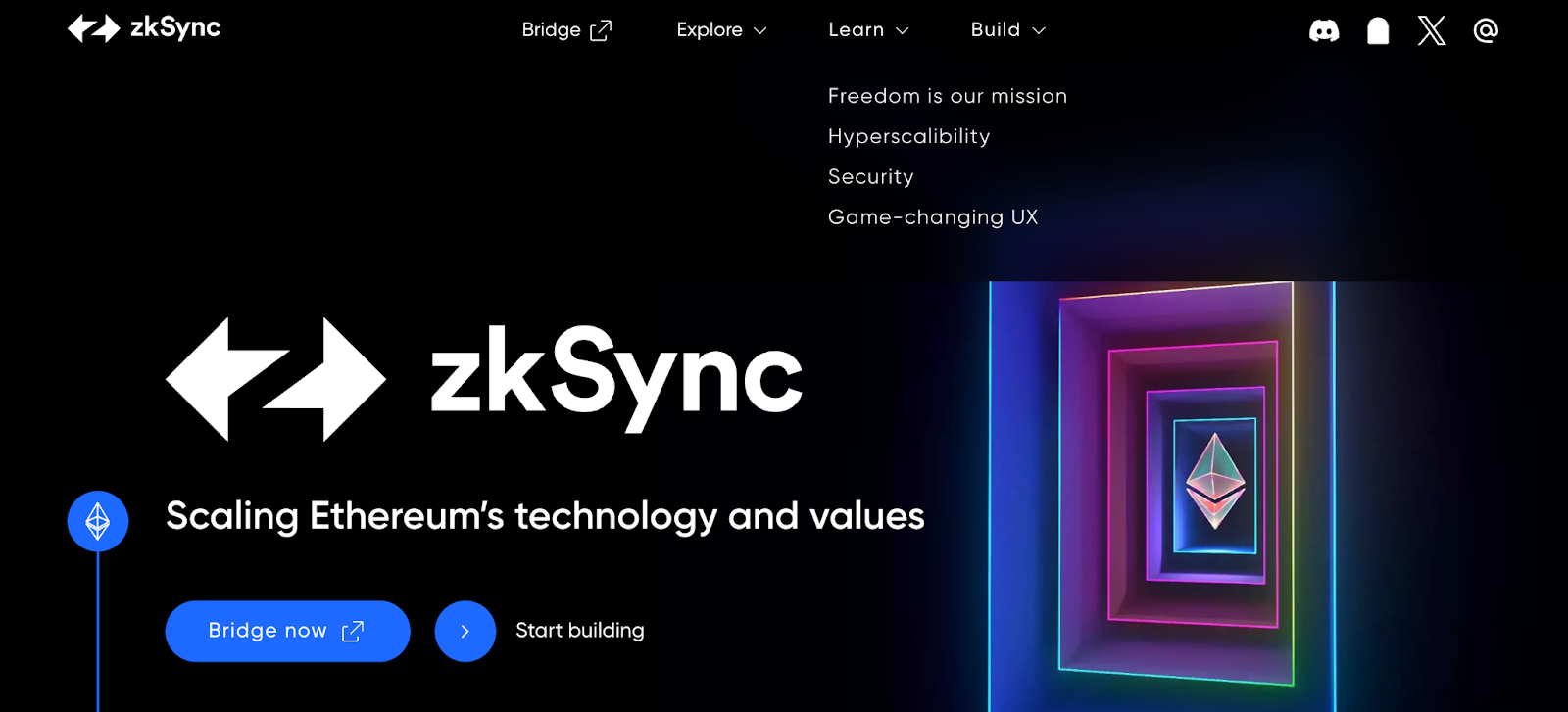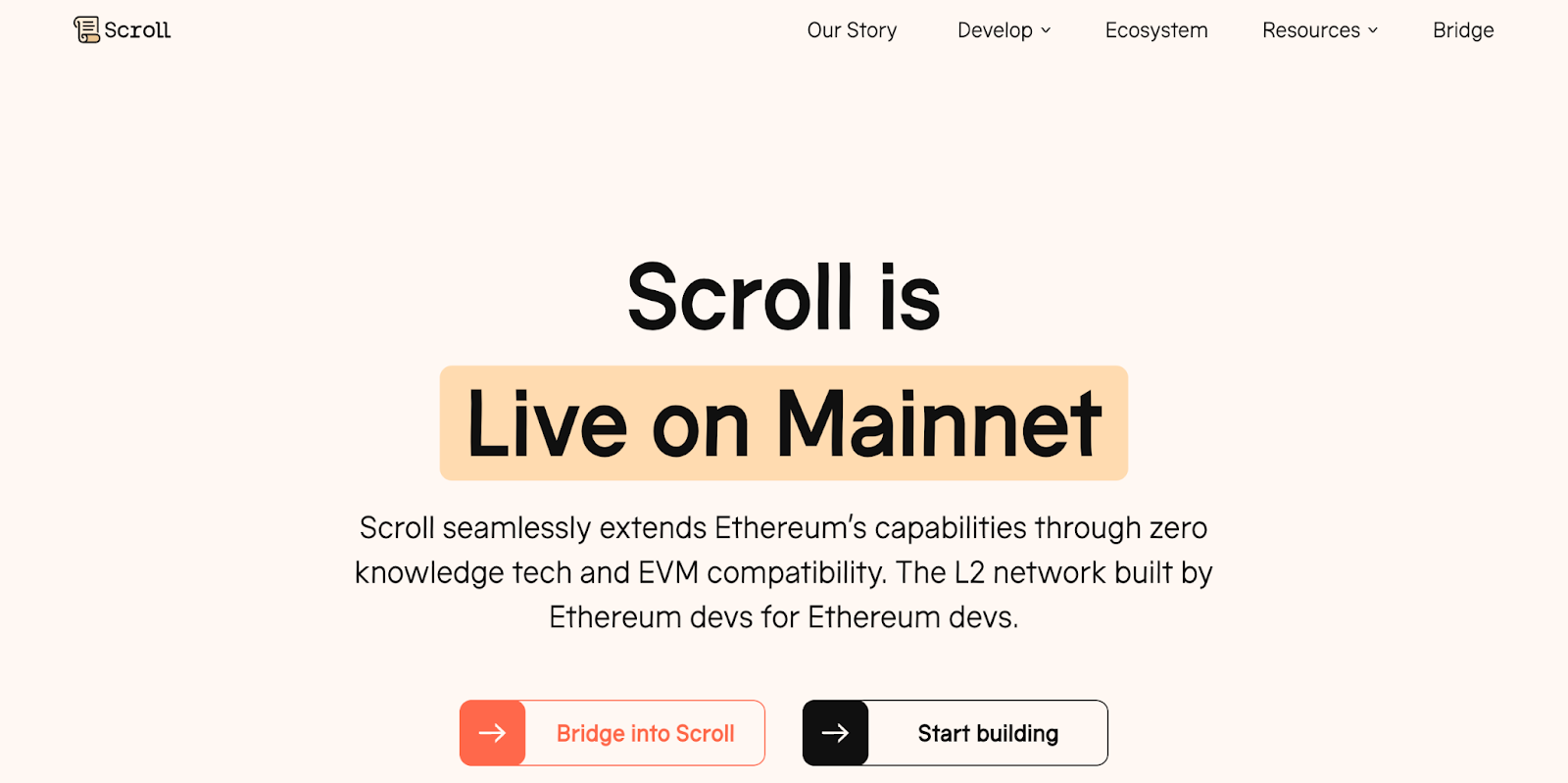The Future of Ethereum: ZK Rollups and Top Projects for 2024
 Mukesh Godara
Mukesh GodaraTable of contents
- Why Ethereum Needs ZK Rollups
- What Are ZK Rollups and How Do They Work?
- Scaling Ethereum with ZK Rollups
- Types of ZK Rollups
- zk-SNARKs (Zero-Knowledge Succinct Non-Interactive Arguments of Knowledge)
- zk-STARKs (Zero-Knowledge Scalable Transparent Arguments of Knowledge)
- Best ZK Rollup Projects in the Ethereum Ecosystem
- Challenges of ZK Rollup Technology
- Conclusion
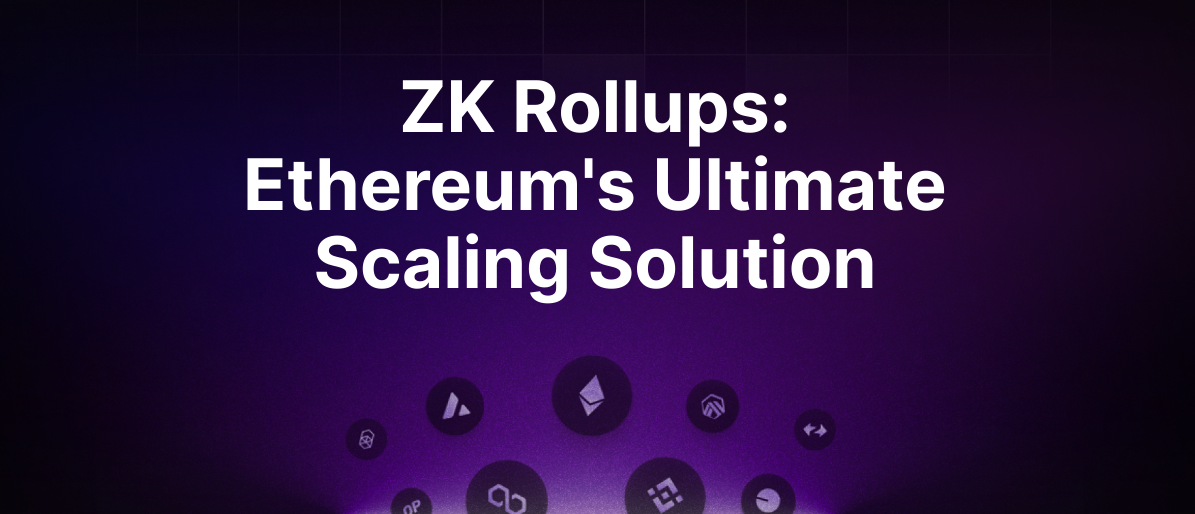
Ethereum, the trailblazer in the world of decentralized applications (dApps), has revolutionized industries from finance to gaming. However, this immense success has highlighted a critical challenge: scalability. As the Ethereum network experiences increased usage, transaction fees skyrocket, and processing times become sluggish, creating bottlenecks that hinder mass adoption. While Ethereum 2.0 is in development to address these issues, Layer-2 solutions, especially ZK rollups, have emerged as a beacon of hope, promising to unlock Ethereum's true potential through unparalleled efficiency and security.
Why Ethereum Needs ZK Rollups
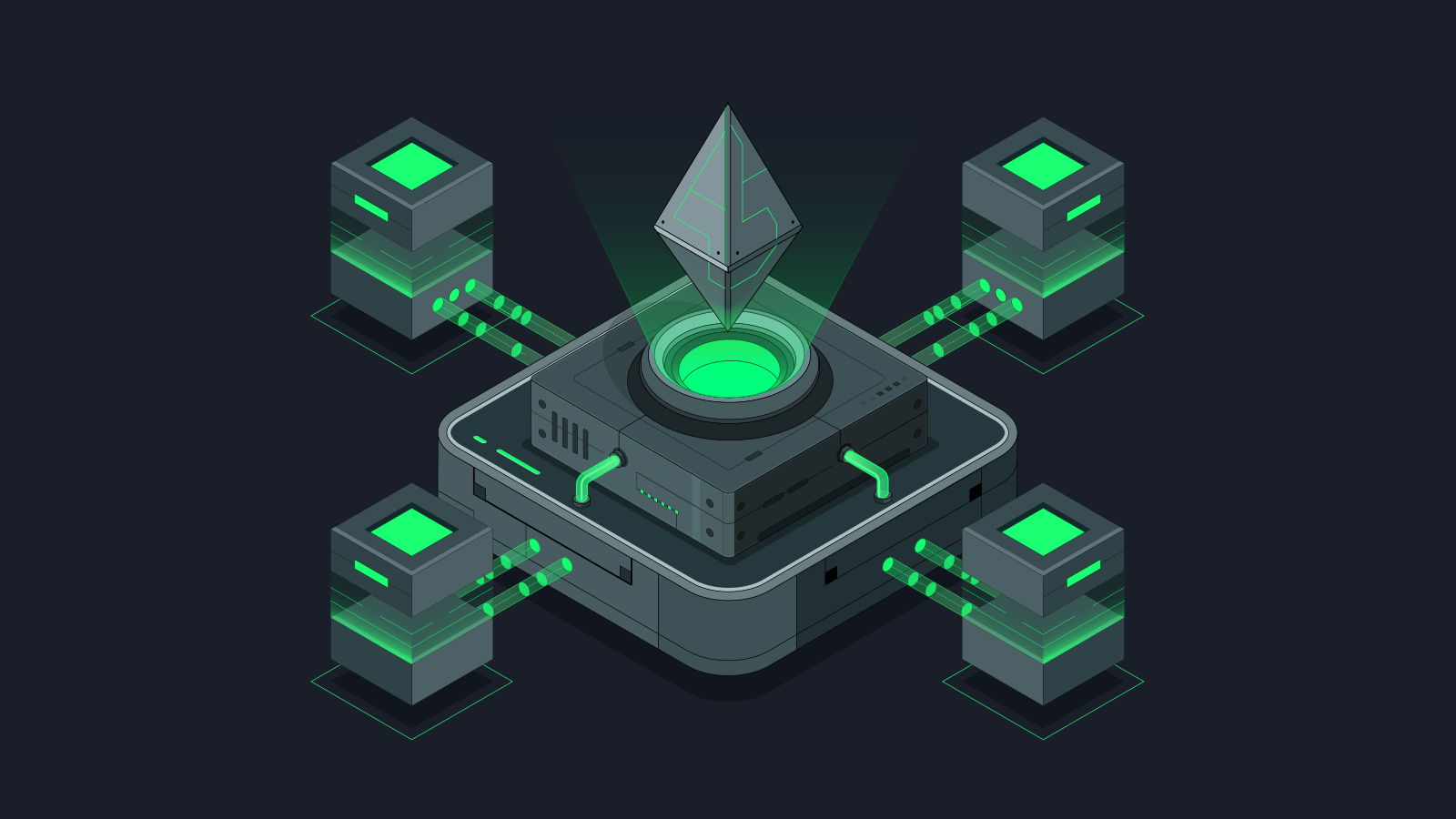
Ethereum's inherent limitations stem from its design to prioritize decentralization and security over scalability. Every transaction on the Ethereum network must be processed and verified by all participating nodes, leading to high computational demand and congestion during peak times. This results in:
High Gas Fees: As more users and dApps flock to Ethereum, the cost of transaction fees, known as gas fees, can become prohibitively expensive.
Slow Transaction Speeds: The network can become clogged, causing delays in transaction processing and reduced user experience.
Scalability Bottlenecks: The need to maintain decentralization and security limits the number of transactions Ethereum can process per second.
To overcome these challenges and support the growing demand for decentralized applications, Ethereum needs a solution that can enhance its scalability without compromising on security and decentralization. This is where ZK rollups come into play.
What Are ZK Rollups and How Do They Work?
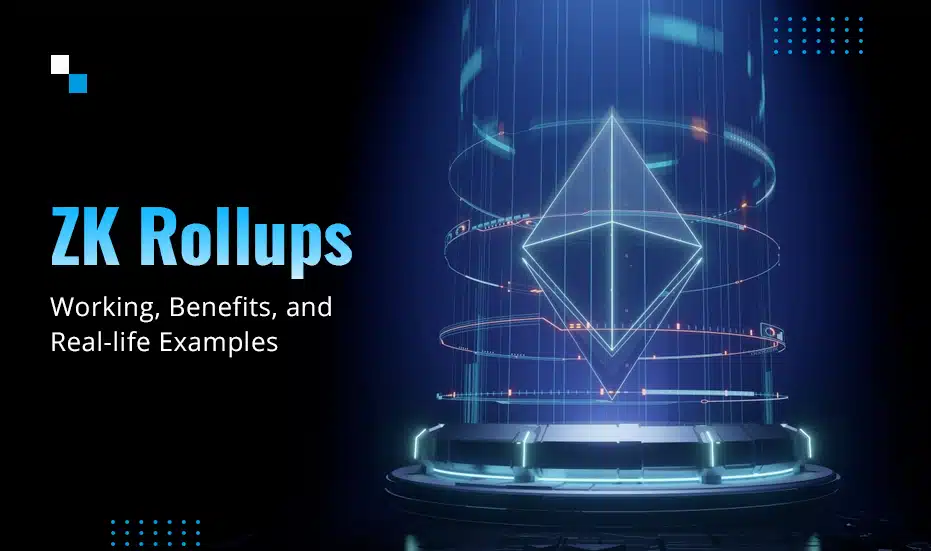
ZK rollups, or Zero-Knowledge rollups, are a type of Layer-2 scaling solution designed to increase the transaction throughput of a blockchain like Ethereum. They work by bundling multiple transactions into a single one, thereby reducing the load on the main network. Here’s a simplified breakdown of how ZK rollups function:
On-chain Contracts: Smart contracts on the Ethereum mainnet define the rules for transactions in the ZK rollup.
Off-chain Virtual Machine: Transactions occur off-chain in a separate virtual machine, achieving significant cost reduction and speed benefits.
Zero-Knowledge Proof Generation: A cryptographic proof, known as a zero-knowledge proof, is generated to demonstrate the validity of the entire batch of transactions without revealing any individual details.
On-chain Proof Verification: This proof is submitted to the mainnet and verified by validators, ensuring the integrity of the off-chain transactions.
Scaling Ethereum with ZK Rollups
ZK rollups enhance the Ethereum ecosystem by addressing its core limitations:
Scalability and Efficiency: By bundling multiple transactions into a single proof, ZK rollups reduce the data stored on the Ethereum mainnet, significantly increasing transaction throughput and lowering gas fees.
Security and Speed: They ensure the security of transactions through cryptographic proofs, achieving faster transaction finality compared to other Layer-2 solutions.
Improved User Experience: ZK rollups offer quicker and cheaper transactions, enhancing the overall user experience and making Ethereum more accessible for high-throughput applications.
Types of ZK Rollups
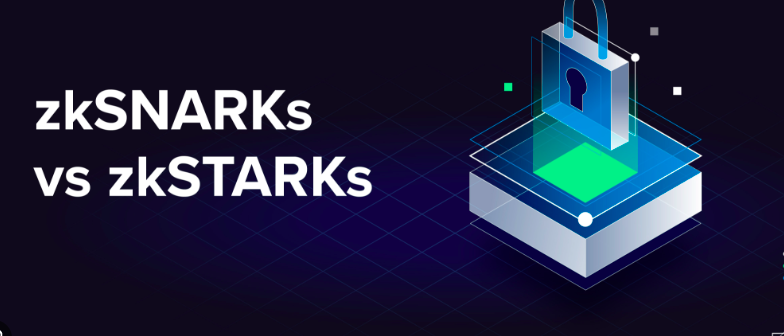
ZK rollups, or Zero-Knowledge rollups, are categorized based on the specific type of zero-knowledge proof technology they use. Here are the primary types:
zk-SNARKs (Zero-Knowledge Succinct Non-Interactive Arguments of Knowledge)
zk-STARKs (Zero-Knowledge Scalable Transparent Arguments of Knowledge)
zk-SNARKs (Zero-Knowledge Succinct Non-Interactive Arguments of Knowledge)
Overview: zk-SNARKs are a type of cryptographic proof that allows one party to prove to another that a statement is true without revealing any information beyond the validity of the statement itself. They are known for their succinctness and efficiency.
Features:
Succinctness: zk-SNARKs produce very short proofs that can be verified quickly.
Non-Interactive: The prover and verifier do not need to interact multiple times, making the proofs non-interactive.
Trusted Setup: zk-SNARKs require an initial trusted setup phase, where a set of cryptographic parameters is generated securely. This setup phase needs to be done correctly to ensure security.
Applications:
Privacy-Preserving Transactions: zk-SNARKs are widely used in privacy-focused blockchain applications to keep transaction details confidential while ensuring their validity.
Scalability Solutions: zk-SNARKs are used in ZK rollups to increase transaction throughput and reduce costs on the Ethereum network.
Example Projects:
Manta Network: Uses zk-SNARKs to ensure privacy-preserving DeFi transactions.
zkSync Era: Utilizes zk-SNARKs for scalable and efficient transaction processing on Ethereum.
zk-STARKs (Zero-Knowledge Scalable Transparent Arguments of Knowledge)
Overview: zk-STARKs are another type of zero-knowledge proof that aims to address some of the limitations of zk-SNARKs, particularly the need for a trusted setup. zk-STARKs offer enhanced scalability and transparency.
Features:
Scalability: zk-STARKs are designed to handle a large number of transactions efficiently, making them highly scalable.
Transparency: Unlike zk-SNARKs, zk-STARKs do not require a trusted setup, making them more transparent and secure.
Quantum Resistance: zk-STARKs are resistant to quantum attacks, providing future-proof security.
Applications:
Scalable Blockchain Solutions: zk-STARKs are used to process large volumes of transactions off-chain and then verify them on-chain, enhancing scalability.
Privacy and Security: zk-STARKs provide a high level of security without compromising transparency, making them suitable for a wide range of blockchain applications.
Example Projects:
- StarkNet: Uses zk-STARKs to offer high scalability and privacy for decentralized applications on Ethereum.
Best ZK Rollup Projects in the Ethereum Ecosystem
The ZK Rollup landscape is rapidly evolving, with innovative players emerging to reshape the game. Here are some of the trending ZK rollup layer-2 solutions on Ethereum to watch:
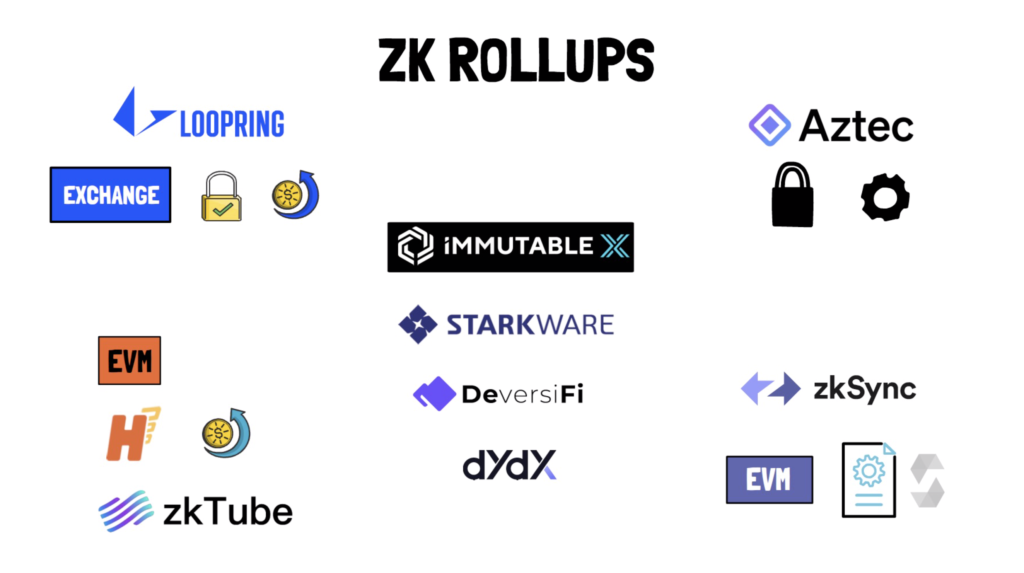
-
TVL: $851 million
Launch Date: September 2023 (Testnet launch)
Native Token: MANTA, used for governance, staking, and fee payments for the privacy-focused DeFi platform.
Manta Network focuses on privacy-preserving DeFi transactions. The Manta Pacific layer-2 on Ethereum uses zk-SNARKs (Zero-Knowledge Succinct Non-Interactive Argument of Knowledge) to ensure transaction privacy. Within a short time since its launch, it has overtaken Coinbase’s Base to become the fourth largest Ethereum Layer-2 network by TVL.
By leveraging zk-SNARKs, Manta Network allows users to transact and swap cryptocurrencies in a completely private manner. The details of the transaction, including the assets and amounts, are encrypted but verifiable for legitimacy.
Key Advantage: Manta Network sets itself apart from its competition owing to its emphasis on privacy within the DeFi space, a feature often lacking in other DeFi platforms. This Ethereum layer-2 network also focuses on interoperability, aiming to create a privacy layer for all DeFi applications across various blockchains.
Example: Imagine a secret swap club where you can trade stickers without anyone else knowing what you traded.
-
TVL: $202 million
Launch Date: August 2023
Native Token: LINEA, utility yet to be announced.
Linea uses ZK Rollups to improve transaction speeds and reduce costs. It processes transactions off the main Ethereum chain and batches them together for submission, using zk-SNARKs for validation. Linea has announced an airdrop campaign for its native token in January 2024, although details about the token’s utility are yet to be revealed.
Key Advantage: Linea's key strengths are scalability and speed, offering higher throughput than many competitors.
Example: Think of Linea as a super-fast cashier who bundles everyone's purchases and checks them all at once.
-
TVL: $115 million
Launch Date: March 2023 (Mainnet Beta launch)
Native Token: MATIC, used for gas fees and network governance.
Polygon zkEVM (Zero Knowledge Ethereum Virtual Machine) is part of the Polygon suite, offering a scalable and Ethereum-compatible ZK Rollup solution. It operates by executing transactions off-chain in an EVM-compatible environment and then proving their validity on-chain using ZK proofs. This ensures compatibility with existing Ethereum contracts and tools.
Key Advantage: The standout feature of Polygon zkEVM is its compatibility with existing Ethereum tools and smart contracts, making it highly accessible for developers already familiar with Ethereum's ecosystem.
Example: Like upgrading to a VIP pass at the theme park, allowing you to use the existing rides but with a faster, special line.
-
TVL: $170 million
Launch Date: February 2022
Native Token: STRK, used for gas fees, governance, and staking.
StarkNet is built on STARKs (Scalable Transparent ARguments of Knowledge), a type of zero-knowledge proof technology. It's designed for high scalability and privacy. StarkNet processes and verifies transactions off-chain using STARKs and then posts these proofs to the Ethereum mainnet. This method allows for significant scalability while ensuring the security and privacy of transactions.
Key Advantage: The use of STARKs makes StarkNet highly scalable and secure without requiring a trusted setup (unlike zk-SNARKs). STARKs are also quantum-resistant, offering future-proof security.
Example: Imagine using a magic book that verifies all trades in your sticker collection without revealing the details..
-
TVL: $555 million
Launch Date: March 2023 (Full Mainnet launch)
Native Token: ZKS, used for gas fees, governance, and staking.
zkSync Era, developed by Matter Labs, uses zkRollup technology. It focuses on scalability and user experience, maintaining Ethereum compatibility. zkSync Era processes transactions off-chain and batches them into a single proof, which is then submitted to the Ethereum mainnet. This process leverages zero-knowledge proofs for security and efficiency.
Key Advantage: zkSync Era maintains EVM compatibility, meaning it can run Ethereum smart contracts directly. This is a significant advantage for developers looking to migrate to Layer-2 without rewriting their code.
Example: Scroll is like a super-efficient librarian who quickly organizes and validates all the books.
-
TVL: $63.46 million
Launch Date: October 2023 (Bridge Deployment)
Native Token: No native token yet.
Scroll is a ZK Rollup solution focusing on high throughput and low latency. It utilizes zk-SNARKs for compressing transactions. Transactions are executed off-chain and then aggregated into a single zk-SNARK proof. This proof is then submitted to the Ethereum mainnet, confirming the validity of all the included transactions.
Key Advantage: Scroll focuses on achieving high throughput while keeping costs low. It aims to provide a more efficient alternative for DeFi applications and other high-transaction-volume use cases.
Example: Scroll is like a super-efficient librarian who quickly organizes and validates all the books.
Challenges of ZK Rollup Technology
Despite their benefits, ZK rollups face several challenges:
Complexity: Advanced cryptography makes implementation and maintenance difficult.
Limited Flexibility: Efficiently processing certain types of transactions can be challenging.
Data Availability: Ensuring data availability is crucial.
Prover Efficiency: Generating cryptographic proofs is resource-intensive.
User Adoption and Integration: Requires widespread adoption and infrastructure support.
Governance: Decentralized and secure governance models are necessary.
Cost and Viability: Operational expenses can challenge the economics of ZK rollups.
Conclusion
ZK rollups are transforming how blockchain transactions are processed, making them faster, cheaper, and more secure. Just like our theme park and sticker collection examples, ZK rollups bundle and validate transactions efficiently, unlocking the full potential of blockchain technology.
Subscribe to my newsletter
Read articles from Mukesh Godara directly inside your inbox. Subscribe to the newsletter, and don't miss out.
Written by

